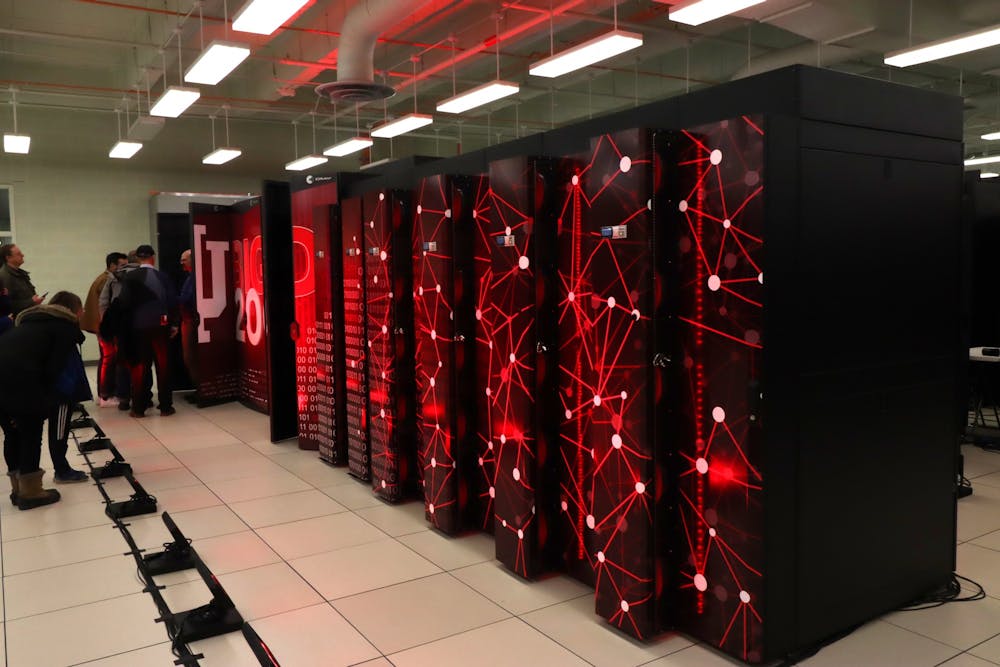Less than one mile from campus, IU houses one of the most powerful supercomputers on Earth, and many students can use it for free.
On Jan. 20, IU President Michael McRobbie unveiled the Big Red 200 supercomputer, a long-awaited project poised to change the face of research at IU and across the state. The Big Red 200 operates at 5.9 petaFLOPS – a measure of computational speed – making it the 32nd most powerful supercomputer in operation according to a list from Top500, a project tracking and evaluating the international supercomputer market. BR200 is also the single most powerful university-owned AI supercomputer in the U.S.
The supercomputer is a big step forward in IU’s technological prominence. It’s a huge leap for IU during an age defined by technological innovation, promising to bring the university to the forefront of research.
That’s not all that makes it special. Fred Cate, vice president of research at IU, said the computer was specifically designed to use artificial intelligence to help solve research problems. Artificial intelligence is one of the fastest-developing fields in technology with near universal application – especially in research. Big Red 200 is exciting because its speed and power will open new doors in research and bring opportunities to the university.
Development of resources like this one is crucial to improving IU as a school and a center of research and academia. But it’s not just the faculty or the administration who reaps the benefits. Over time, students will feel the impact of BR200 along with the entire state of Indiana.
Professors at IU are equally excited.
Researcher Tatiana Foroud is identifying genes contributing to illnesses from Alzheimer’s to Parkinson’s disease to alcoholism to cancer. Foroud routinely analyzes billions of chemical structures from thousands of patients, which BR200 will be able to crunch through in a fraction of the time
Andrew Saykin is studying Alzheimer’s disease at IU by mapping brain structure to track the disease’s progression. BR200 will give Saykin access to 25 times as much data than IU’s previous computer, Big Red II.
“IU's commitment to making advanced supercomputers available to faculty, staff and students is one of the reasons I took the job here,” said Ben Kravitz, a professor of earth and atmospheric sciences, in an interview with IU’s University Information Technology Services.
That accessibility sets the supercomputer apart.
Big Red 200 is completely free to use, a characteristic shared by few universities, Cate said. At IU, staff, faculty, graduate students and select undergraduate students can use the machine to run their own projects or research cases requiring vast computational resources. Students will even be able to check out what programs are running in real time.
It is also a symbol of the university’s increasing emphasis on technology and a reinforcement of the centrality of research to IU.
IU didn’t have an engineering school until 2000, largely because Purdue University dominated the field in the state. As technology advanced, universities emphasizing STEM research expanded, especially computing.
Cate says research activity brought over $680 million in grants and funding to IU in 2019. He expects that number to balloon as more projects are put through BR200 and more partnerships are established with governments and peer universities.
Research activity will only grow, and the rising tide can shift all boats. In a few years’ time, professors might start teaching the very material they themselves discovered using Big Red 200. New and original ideas will be fostered at IU.
With BR200, IU is beginning to capitalize on its resources to become a frontrunner in computing. Hopefully this is a signal that IU is doubling down on its efforts to become a national center of research and development.
Aniket Davé (he/him) is a junior studying finance and marketing. He's interested in business, markets, international affairs, books and movies.






